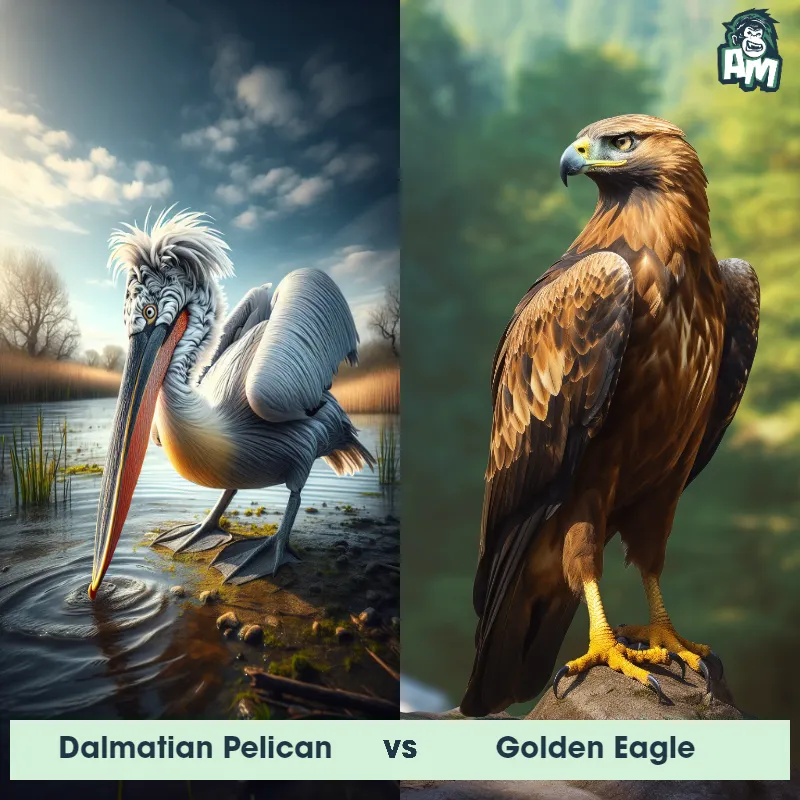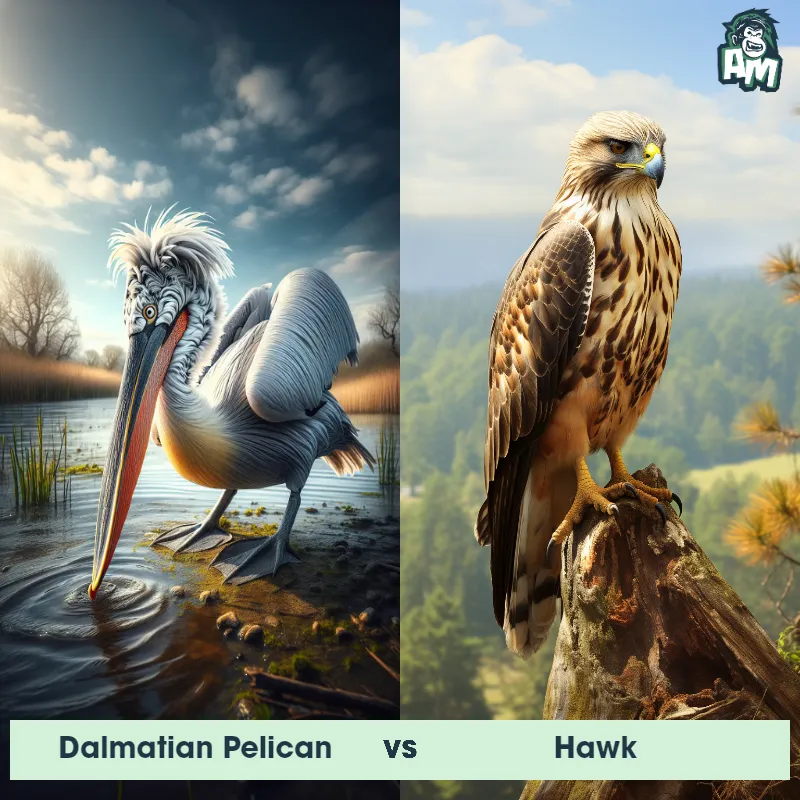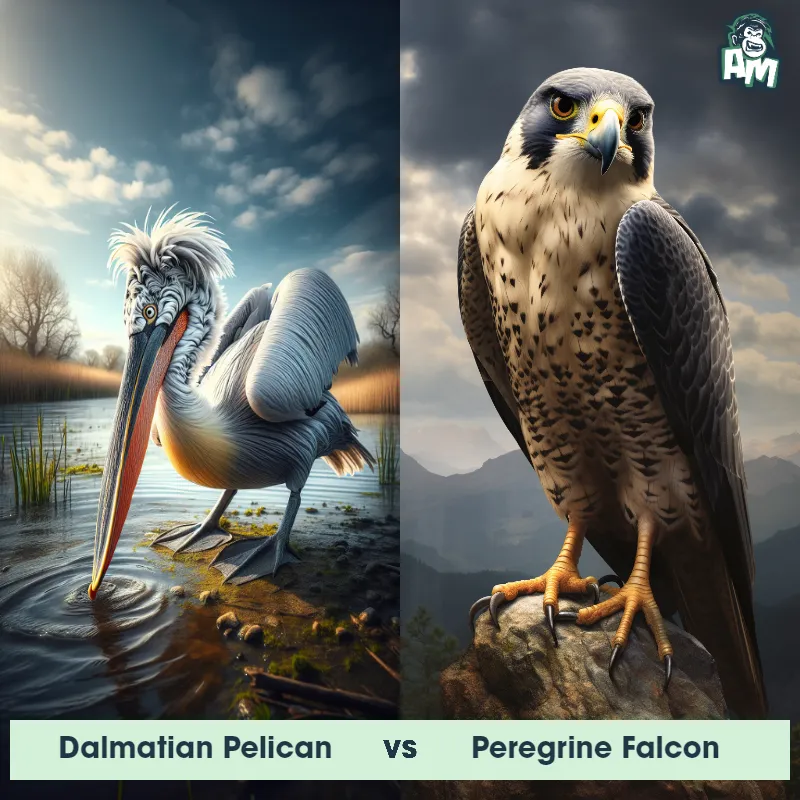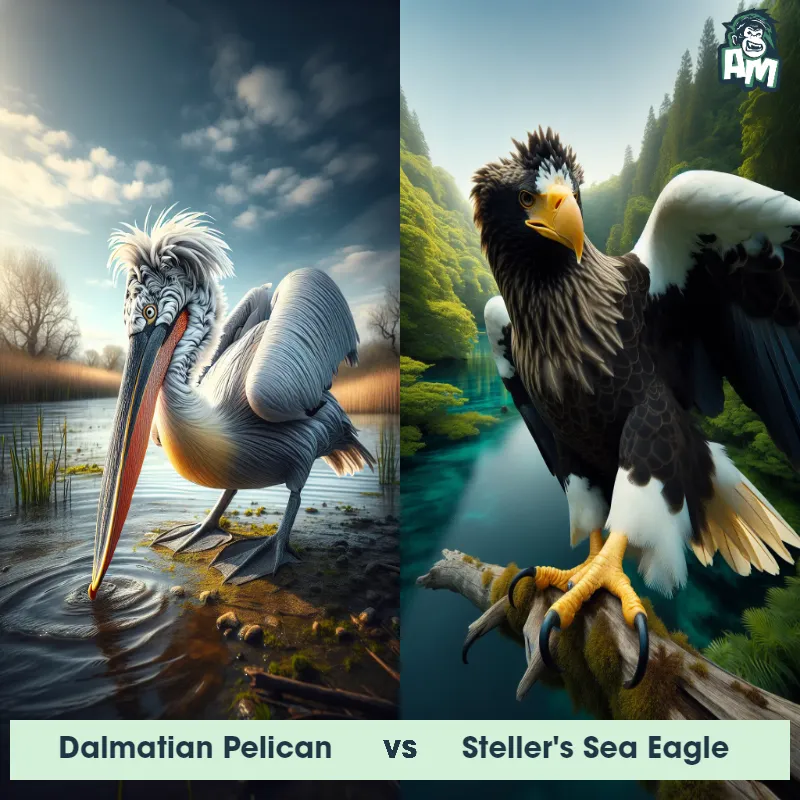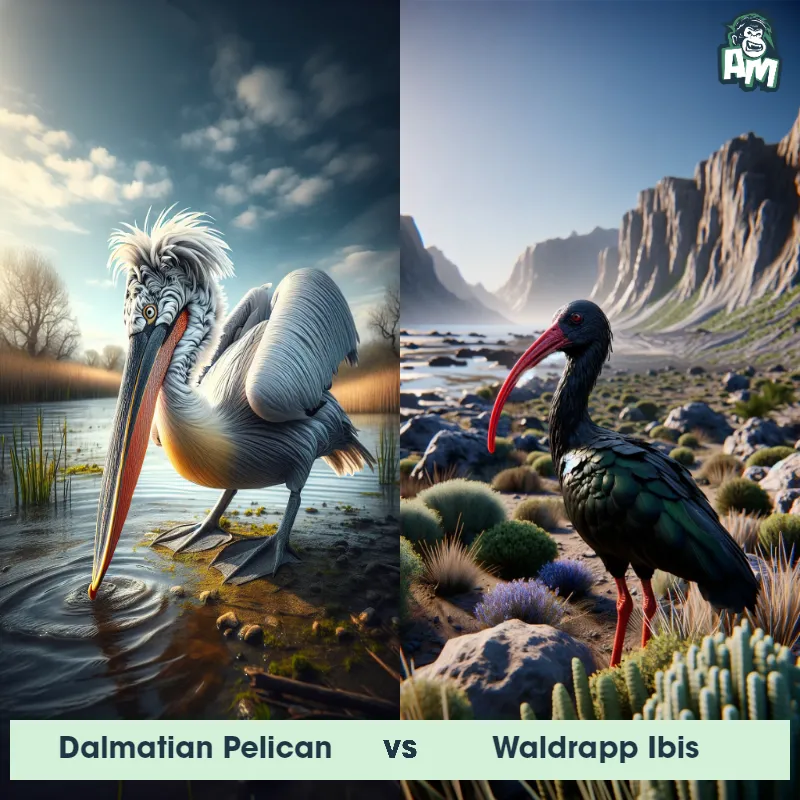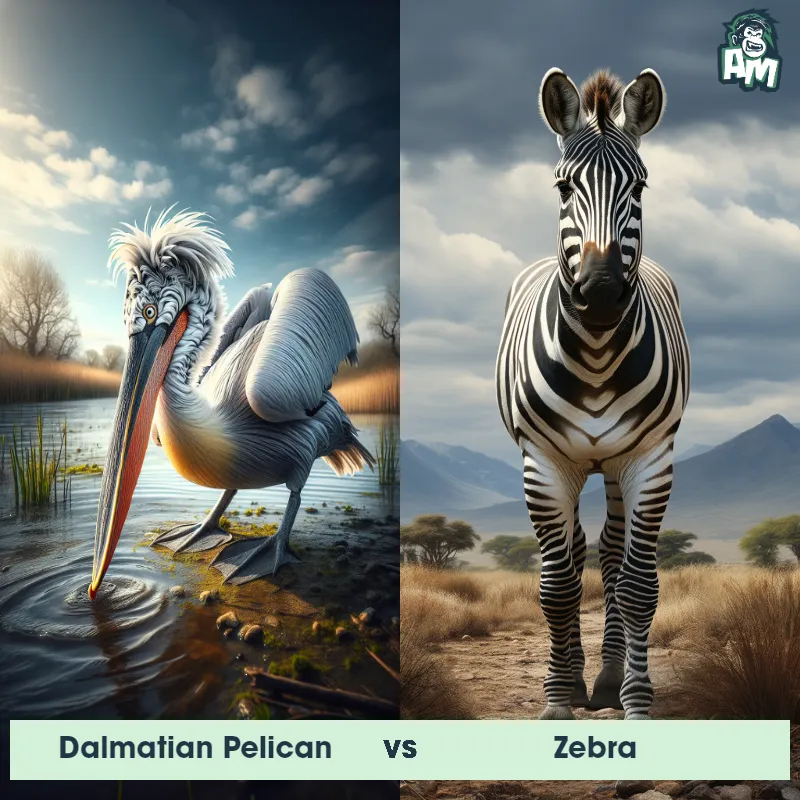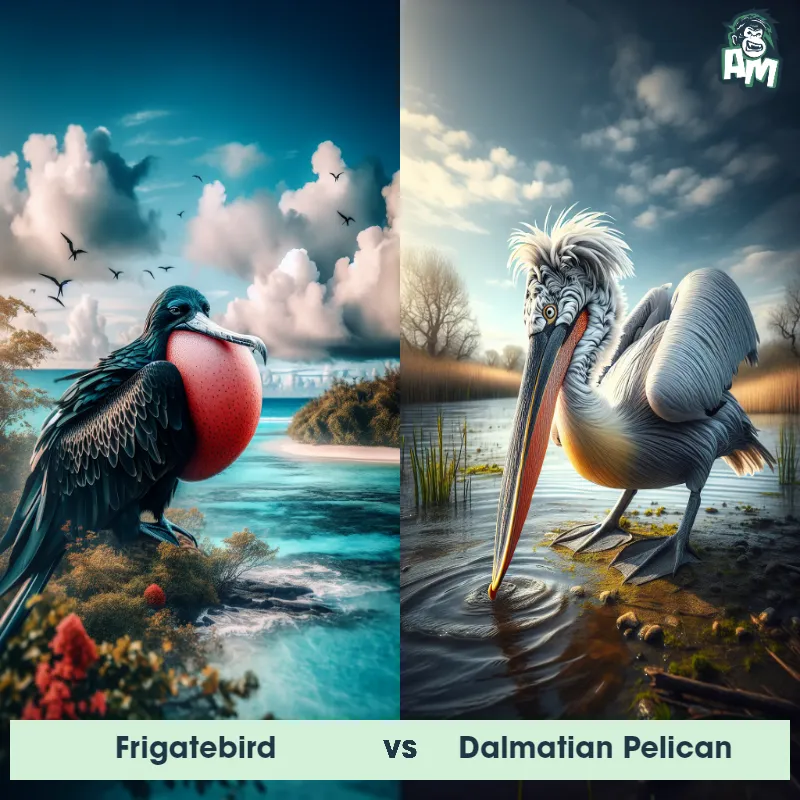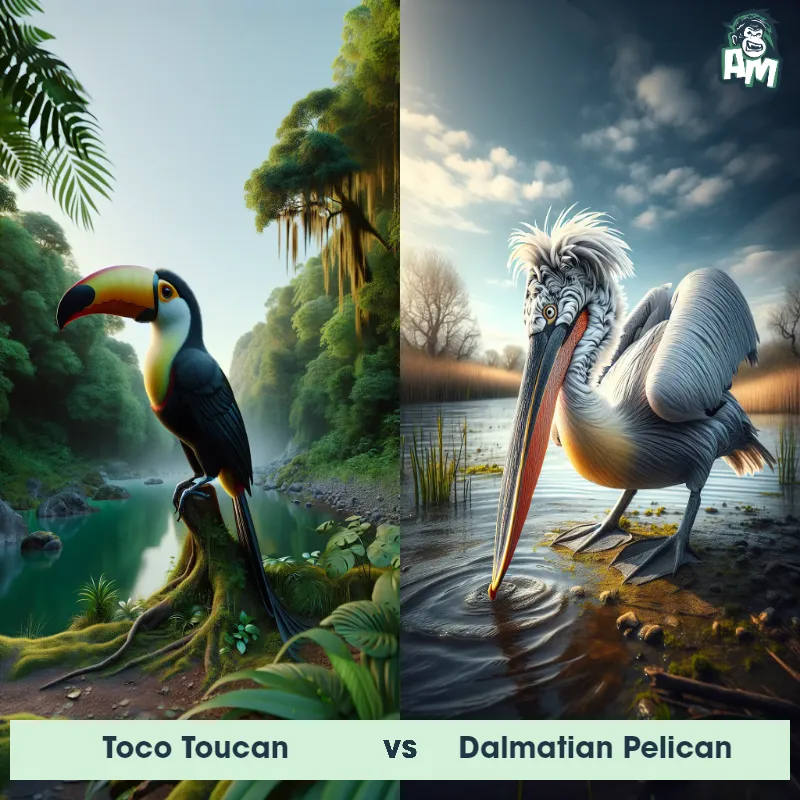The Dalmatian Pelican
The Dalmatian Pelican, scientifically known as Pelecanus crispus, is a large water bird that belongs to the pelican family. It is one of the heaviest flying birds, weighing up to 33 pounds 15 kilograms and reaching a wingspan of up to 9 feet 2.8 meters. The Dalmatian Pelican is characterized by its striking white plumage, a long and robust bill, and a prominent throat pouch. During breeding season, it develops a bright red beak and a pinkish tint on its legs and facial skin.

| Dalmatian Pelican | |
|---|---|
| Size | Up to 1.8 meters (5.9 feet) in length |
| Weight | Up to 12 kilograms (26.5 pounds) |
| Speed | 31mph (50km/h) |
| Key Strength | Powerful beak and large size |
| Biggest Weakness | Slow movement on land |
| Scientific Name | Pelecanus crispus |
| Family | Pelecanidae |
| Habitat | Freshwater habitats such as lakes, rivers, and marshes |
| Geography | Southeast Europe, Asia, and China |
| Diet | Fish, frogs, crustaceans, and small birds |
| Lifespan | 10 years - 15 years |

The Dalmatian Pelican
The Dalmatian Pelican, scientifically known as Pelecanus crispus, is a large water bird that belongs to the pelican family. It is one of the heaviest flying birds, weighing up to 33 pounds 15 kilograms and reaching a wingspan of up to 9 feet 2.8 meters. The Dalmatian Pelican is characterized by its striking white plumage, a long and robust bill, and a prominent throat pouch. During breeding season, it develops a bright red beak and a pinkish tint on its legs and facial skin.
Fun Fact: The Dalmatian Pelican has the largest bill of any living bird, measuring up to 18 inches 45 centimeters in length.
| Dalmatian Pelican | |
|---|---|
| Size | Up to 1.8 meters (5.9 feet) in length |
| Weight | Up to 12 kilograms (26.5 pounds) |
| Speed | 31mph (50km/h) |
| Key Strength | Powerful beak and large size |
| Biggest Weakness | Slow movement on land |
| Scientific Name | Pelecanus crispus |
| Family | Pelecanidae |
| Habitat | Freshwater habitats such as lakes, rivers, and marshes |
| Geography | Southeast Europe, Asia, and China |
| Diet | Fish, frogs, crustaceans, and small birds |
| Lifespan | 10 years - 15 years |
Dalmatian Pelican Matchups
We use AI to simulate matchups between the Dalmatian Pelican and other animals. Our simulation considers size, strength, and natural predatory behaviors to determine the most likely outcome.

Can't find the Matchup you want?
Create Your Own MatchupDalmatian Pelican: Diet, Predators, Aggression, and Defensive Behaviors
What do Dalmatian Pelicans eat?
Dalmatian Pelicans primarily feed on fish, crustaceans, and occasionally small mammals and birds. They are known for their impressive fishing skills, using their large pouch-like bill to scoop up fish from the water.
Do Dalmatian Pelicans have any predators?
Dalmatian Pelicans are large birds and do not have many natural predators. However, young pelicans may be vulnerable to predators such as foxes, eagles, and large fish.
Are Dalmatian Pelicans aggressive?
Dalmatian Pelicans are not typically aggressive towards humans or other animals unless provoked. They are social birds that often nest in colonies and exhibit cooperative behaviors.
Do Dalmatian Pelicans fight?
Dalmatian Pelicans may engage in disputes over food or nesting sites, leading to fights among individuals. These conflicts are usually resolved through displays of dominance rather than physical combat.
How do Dalmatian Pelicans defend themselves?
Dalmatian Pelicans rely on their large size and strength as a form of defense against predators or threats. They may also use their sharp bill to peck or jab at potential threats if necessary.
What is the biggest weakness of Dalmatian Pelicans in a fight?
The Dalmatian Pelican's biggest weakness in a fight is their relatively slow and clumsy movements on land. While they are powerful flyers and skilled swimmers, they can be vulnerable when faced with a faster or more agile opponent on solid ground.
Fun Fact: While primarily known for its aquatic lifestyle, the Dalmatian Pelican is also an adept flier, capable of reaching speeds of up to 35 miles per hour 56 kilometers per hour during migration.
Fun Fact: Unlike other pelican species, the Dalmatian Pelican does not plunge-dive for fish. Instead, it typically feeds by scooping fish and other small aquatic animals from the water's surface with its enormous bill.



